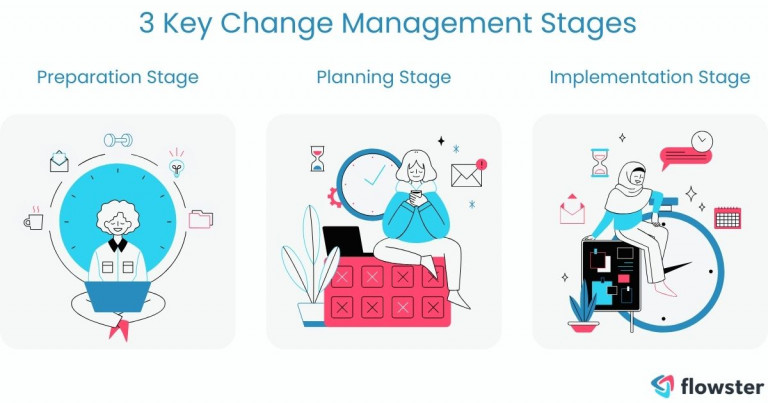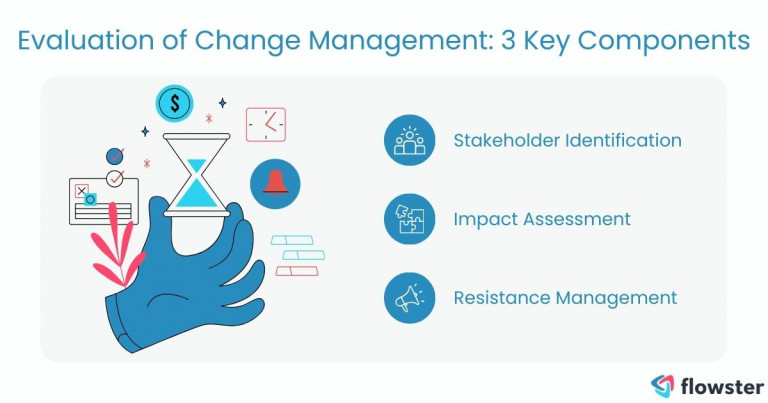In today’s fast-paced business world, adapting to change is not just beneficial; it’s essential. Change management checklists have emerged as a vital tool for navigating this ever-evolving landscape. Organizations frequently grapple with the challenges of implementing change effectively.
This is where a robust change management checklist becomes indispensable. Whether you’re looking at a general checklist or something more tailored to a specific project or methodology, understanding these tools can transform your approach to change.
Article Outline
Understanding Change Management Checklists:
A change management checklist is essentially a roadmap, guiding you through the intricacies of managing change. It encompasses critical components like stakeholder identification, impact assessment, and communication strategies.
Employing these checklists can significantly enhance your planning and execution, ensuring nothing is overlooked. Popular methodologies, such as the Prosci ADKAR Model, often serve as a foundation for these checklists, offering a structured approach to change management.
Enhance your mastery of the change management process with our in-depth guide, ‘Master the Change Management Process: Steps, Tips & Free Templates.’ Click here for essential insights and free templates to effectively navigate every phase of your change management journey.

Building Your Comprehensive Checklist:
Now that we’ve explored the fundamentals of change management checklists, let’s delve into constructing your own comprehensive checklist. This section will guide you through the essential stages of preparation, planning, and implementation, ensuring a well-rounded approach to managing change.
Preparation Stage:
Preparedness is the first step in the process.
- Define the Change: Clearly articulate the change you’re aiming to implement. This could range from introducing new software to revamping your organizational structure.
- Assess the Impact: Evaluate how this change will affect different parts of your organization and its stakeholders. This step is crucial for anticipating challenges and preparing accordingly.
- Identify Stakeholders: Knowing who the change will affect allows you to tailor your strategy to meet their needs and concerns.
Delve deeper into the foundational aspects of change management with this insightful article, ‘Key Elements of a Change Management Plan.’ Explore this resource to enhance your preparation stage with expert guidance and strategic insights. Click here.
Planning Stage:
After that comes the stage of planning.
- Develop a Communication Plan: Effective Change Management A communication plan is key. Decide how you’ll inform stakeholders about the change, address their concerns, and keep them engaged.
- Create a Training Plan: Determine what training will be required and develop programs to equip your team for the transition.
- Address Resistance: Anticipate resistance and develop strategies to mitigate it. Understanding and addressing concerns is a pivotal part of effective change management.
Further refine your change management planning with this comprehensive guide, ‘Change Management Plan Template,’ available on Indeed. This resource offers a detailed template to structure your planning stage, ensuring thorough and effective change implementation. Click here.
Implementation Stage:
Finally, we have reached the stage of implementation.
- Monitor Progress: Use Change Management Metrics to track the implementation. This helps in identifying any deviations and making the necessary adjustments.
- Provide Support: Ensure ongoing support is available to help your team adapt to the change.
- Gather Feedback: Feedback is a powerful tool for assessing the effectiveness of your change initiative and making improvements.
Further bolster your implementation stage with strategic insights from our article, ‘Processes and Procedures: Strategies for How to Effectively Implement in Your Business.’ Click here to explore practical approaches and techniques for successful implementation in your organization.

Evaluating Your Change Management Process
As you navigate the complexities of implementing change, it’s crucial to continually assess your progress and approach. This Change Management Process Checklist serves as a reflective tool, guiding you to evaluate the effectiveness of your efforts at each stage.
- Establishing a Compelling Case for Change: Did your arguments convincingly address potential resistance from the outset? Ensuring strong buy-in from both management and your team is essential for smooth implementation.
- Goal Achievement: Regularly review whether you are on track to meet your objectives. Remember, the true marker of a successful change management process is reaching your set goals.
- Adherence to Timelines: Evaluate the alignment of your achievements with your planned timeline. Understanding deviations helps refine future timelines or strategies to overcome obstacles.
- Effectiveness of the Change Management Model: Assess whether the model you chose was apt for your specific change initiative. It might be necessary to explore alternative models for future projects.
- Sufficiency of the Strategy: Did your strategy provide adequate guidance throughout the transition? If you found yourself improvising, consider developing a more detailed plan next time.
- Role of Change Leaders: Reflect on whether your change leaders were effective in supporting and advocating for the change. Identifying the right personnel is key to ensuring wider team buy-in for future initiatives.
- Consistency with the Established Timeline: Beyond meeting the final deadline, consider how well intermediate milestones align with your timeline. Aiming for balanced progress minimizes last-minute pressures.
- Feedback from Affected Parties: Gauge the satisfaction of those most impacted by the change. Collecting feedback through surveys or interviews is crucial for a comprehensive evaluation.
- Reflecting on Successes and Areas for Improvement: Finally, identify what went well and what could be enhanced. This introspection is invaluable for honing your approach to future change initiatives.
Enhance your change management assessment with our streamlined Change Management Process Checklist. Download this essential tool now to effectively evaluate and refine your change strategies.
Customizing Your Change Management Checklist:
Adaptation is key in change management. Customize your checklist to align with the specific nature and needs of your change initiative. This might involve tweaking existing templates or developing one from scratch. You can get started by using our free template.
Free Change Management Process Templates
Elevate your checklist customization with our free, user-friendly Change Management Process Templates. Covering all stages of change management, they are designed to adapt seamlessly to any scenario.
Click the “Complete Task” button below to access these comprehensive and versatile templates for your change initiatives.
Beyond the Change Management Checklist:
While checklists are incredibly useful, they’re just one part of the puzzle. Successful change management requires fostering a culture of open communication, adaptability, and ongoing improvement. Delve into additional resources and best practices, such as Change Management Best Practices and the Change Leadership Checklist, to further enhance your strategy.
Leveraging AI in Change Management
In the realm of change management, the advent of AI is revolutionizing how businesses adapt and evolve. AI-driven solutions, particularly in the area of business process automation, are enhancing decision-making, streamlining operations, and offering predictive insights to guide effective change.
To gain a deeper understanding of how AI can elevate your business proficiency, explore our insightful article, ‘How Can AI Business Process Automation Improve Business Proficiency?’ This piece delves into the transformative potential of AI in optimizing business processes and driving successful change initiatives. Click here to read the article.
Transform Your Business with Flowster's AI-Driven Automation
Conclusion:
Change Management Checklists are more than just a list of tasks; they are a strategic framework for navigating organizational change. By understanding, building, and customizing your checklist, you can effectively manage and implement change in your workplace. Remember, the goal is not just to manage change but to master it. So, take these insights and strategies and turn change into an opportunity for growth and innovation in your organization.
Struggling to create SOPs?
Flowster makes it simple to create standard operating procedures using artificial intelligence, or you can browse our library of pre-built SOP templates in the Flowster Marketplace. These templates are designed to meet a variety of business needs and are easily customizable to meet your specific requirements.
Do you need help? Use our “Done for You” services to have our quality and improvement experts design custom workflows for you. Our team can help you create SOPs from scratch, ensuring that they are completely aligned with your business processes and objectives.





3 Responses
Great post! I love how you broke down the process into three easy stages. It makes change management seem much more approachable. Can’t wait to implement these tips in my organization!
Great post! The three-stage approach to creating a change management checklist is clear and practical. I especially appreciated the emphasis on communication and stakeholder involvement. Looking forward to implementing these tips in my own organization!
This checklist is incredibly helpful! I love how you broke down the process into three simple stages. It’s practical and easy to follow, making change management feel less overwhelming. Looking forward to implementing these tips in my next project!